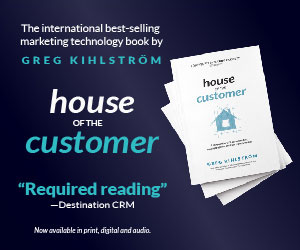This article was based on the interview with Neil Costa of HireClix by Greg Kihlström, MarTech keynote speaker for The Agile Brand with Greg Kihlström podcast. Listen to the original episode here:
The job market has always been challenging, but recent events, such as the COVID-19 pandemic, have made it even more difficult for businesses to find the right candidates. In a podcast episode titled “Successfully Finding the Right Candidates in a Continually Challenging Job Market,” Greg Kihlstrom discusses this issue with Neil Costa, the founder and CEO of HireClix, a recruitment advertising agency.
According to Costa, the state of the job market has been greatly impacted by COVID-19. Initially, there was a period of uncertainty as businesses tried to navigate the new normal. However, after this initial phase, there was a surge in demand for talent, resulting in a power shift to employees. Salaries increased as companies competed for skilled workers. Currently, businesses are facing the aftermath of this boom, with challenges in engaging candidates at the top of the recruitment funnel.
Engaging candidates at the top of the funnel refers to the initial stage of the application process, where businesses attract and capture the attention of potential candidates. This stage is crucial in moving candidates through the application process and ultimately hiring the right individuals. However, companies are struggling to effectively engage candidates and entice them to continue with the application process.
One possible reason for this challenge is the overwhelming number of job opportunities available. With the increase in demand for talent, candidates have more options to choose from. Companies need to stand out and differentiate themselves to capture candidates’ attention. This requires creating compelling job postings and employer branding that resonate with potential candidates.
Another factor contributing to the difficulty in engaging candidates is the rise of passive job seekers. These are individuals who are currently employed but open to new opportunities. Passive job seekers are less likely to actively search for job postings, making it harder for companies to reach them. Businesses need to adopt proactive recruitment strategies, such as targeted advertising and networking, to reach these passive candidates.
Additionally, the application process itself can be a deterrent for candidates. Lengthy and complex application forms, lack of communication, and slow response times can discourage potential candidates from completing the application process. Streamlining and simplifying the application process, as well as providing timely feedback and updates, can help improve candidate engagement.
Furthermore, the use of technology and data analytics can play a significant role in enhancing candidate engagement. Leveraging artificial intelligence and machine learning algorithms can help companies personalize their recruitment efforts and deliver tailored experiences to candidates. By analyzing candidate data and behavior, businesses can identify the most effective strategies for engaging and attracting the right candidates.
Engaging job candidates in a challenging job market is a complex task for businesses. Factors such as increased competition, passive job seekers, and the application process itself contribute to this challenge. However, by adopting proactive recruitment strategies, improving the application process, and leveraging technology and data analytics, companies can enhance candidate engagement and increase their chances of finding the right candidates for their organizations.











